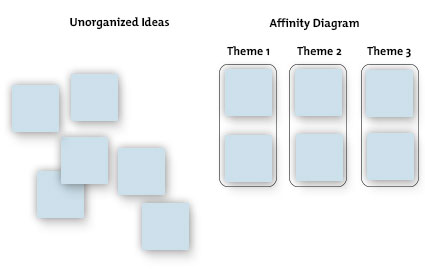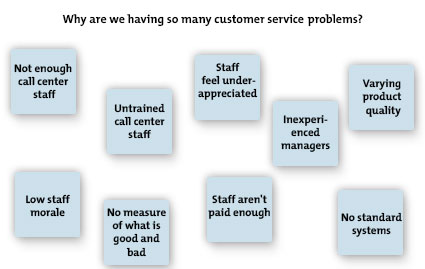Affinity Diagrams
Organizing Information and Ideas Into Common Themes
(Also known as the K-J Method or Affinity Charts)

© iStockphoto
HeikeKampe
Organize information and ideas using affinity diagrams.
Think about the last time you tried to make sense of a large number of ideas.
You may have felt overwhelmed by all of the suggestions, or perhaps you struggled to organize them and make sense of them. You may even have worried that you'd missed vital details, because you "couldn't see the wood for the trees."
In situations like this, you can use affinity diagrams to organize information and ideas, and see how they're connected. We'll look at how to create affinity diagrams in this article and infographic.
About the Tool
Japanese anthropologist Kawakita Jiro originally developed the affinity diagram – also known as the K-J Method or the affinity chart – in the 1960s.
When you use an affinity diagram, an example of which is shown in figure 1 below, you group unorganized ideas into meaningful themes. You can then see the connections between them.
Figure 1 – An Affinity Diagram

How to Use the Tool
Here is a step-by-step guide to creating affinity diagrams. As we work through the steps below, we'll use the example of organizing ideas from a brainstorming session.
Step 1: Transfer Ideas Onto Sticky Notes
Write down every piece of information that you need to organize onto a separate sticky note.
When you are sure that you have written everything down, stick your notes onto a wall or table. Don't worry about organizing information at this stage – you'll do this next.
Example: Figure 2

Step 2: Sort Ideas Into Themes
Your next step is to sort all the ideas into groups. Start small – look for just two ideas that are similar in some way, and group them together on the table or wall. Then, look for another two ideas that relate to one other, and so on. (Where ideas are essentially the same...
Access the Full Article
This article is only available in full within the Mind Tools Club.
Learn More and Join TodayAlready a Club member? Log in to finish this article.


